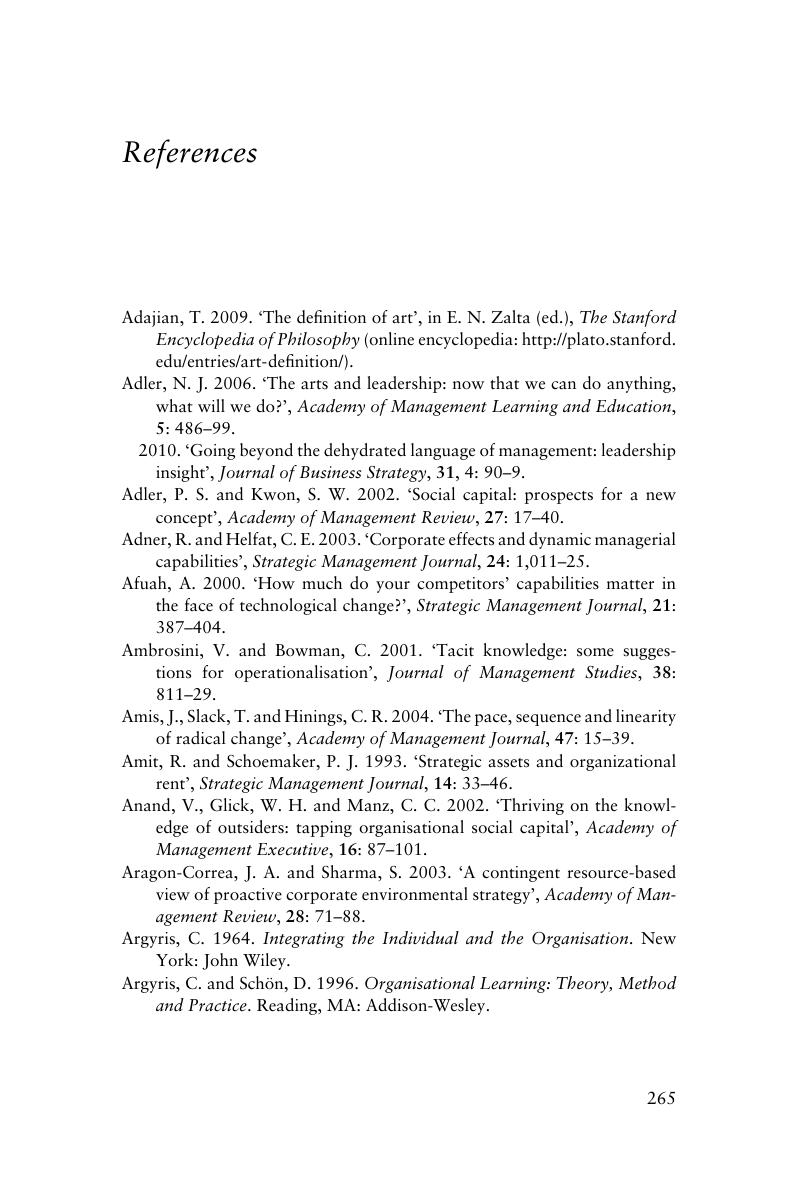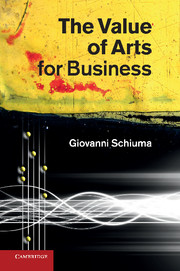Book contents
- Frontmatter
- Contents
- List of figures
- List of boxes
- Acknowledgements
- Foreword
- Introduction
- 1 Why arts matter in management
- 2 The arts into action: Arts-based Initiatives
- 3 The value of Arts-based Initiatives in business
- 4 Arts-based Initiatives and business performance
- 5 Managing Arts-based Initiatives to improve business performance
- A closing remark
- Appendix
- Notes
- References
- Index
- References
References
Published online by Cambridge University Press: 05 July 2011
- Frontmatter
- Contents
- List of figures
- List of boxes
- Acknowledgements
- Foreword
- Introduction
- 1 Why arts matter in management
- 2 The arts into action: Arts-based Initiatives
- 3 The value of Arts-based Initiatives in business
- 4 Arts-based Initiatives and business performance
- 5 Managing Arts-based Initiatives to improve business performance
- A closing remark
- Appendix
- Notes
- References
- Index
- References
Summary

- Type
- Chapter
- Information
- The Value of Arts for Business , pp. 265 - 283Publisher: Cambridge University PressPrint publication year: 2011



